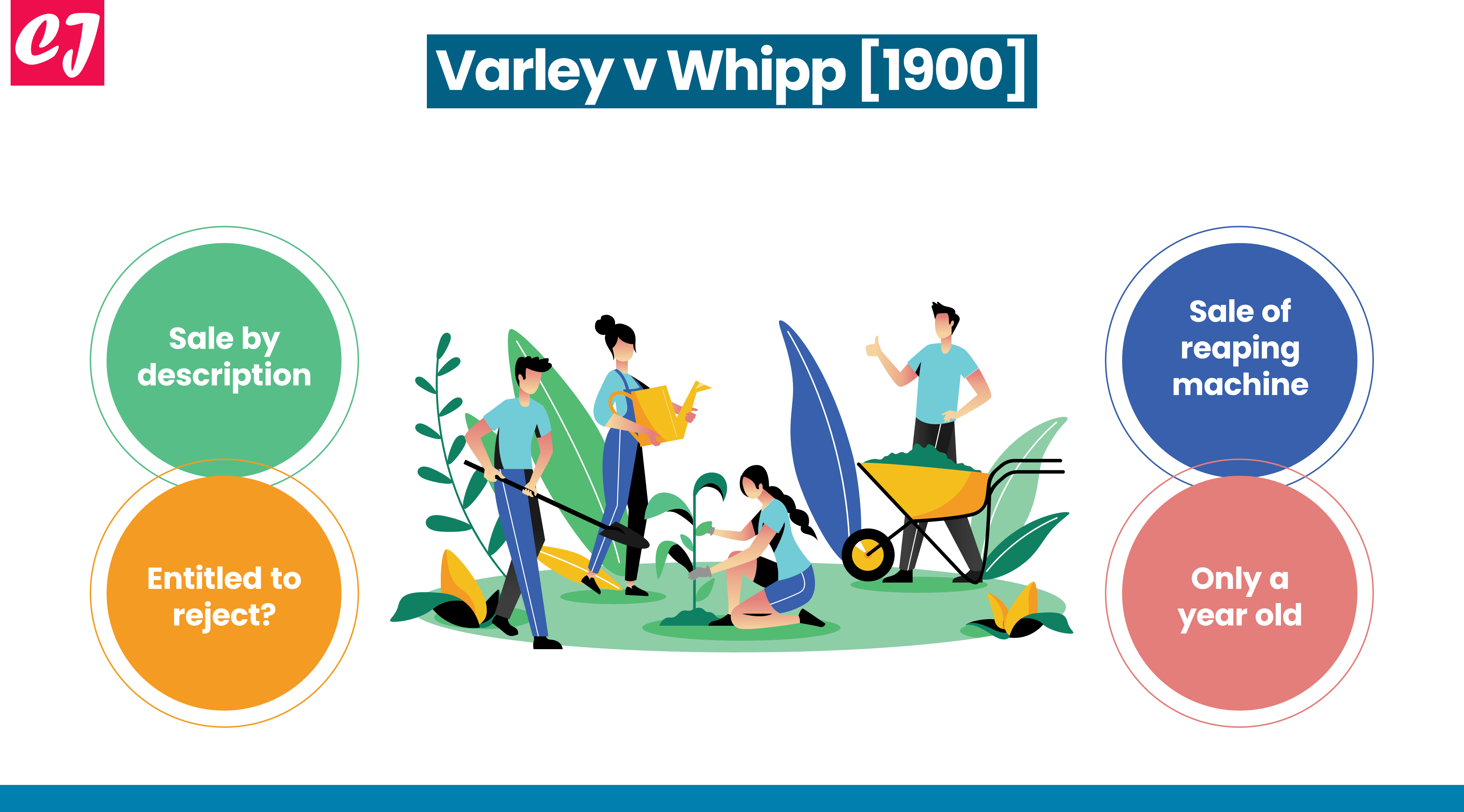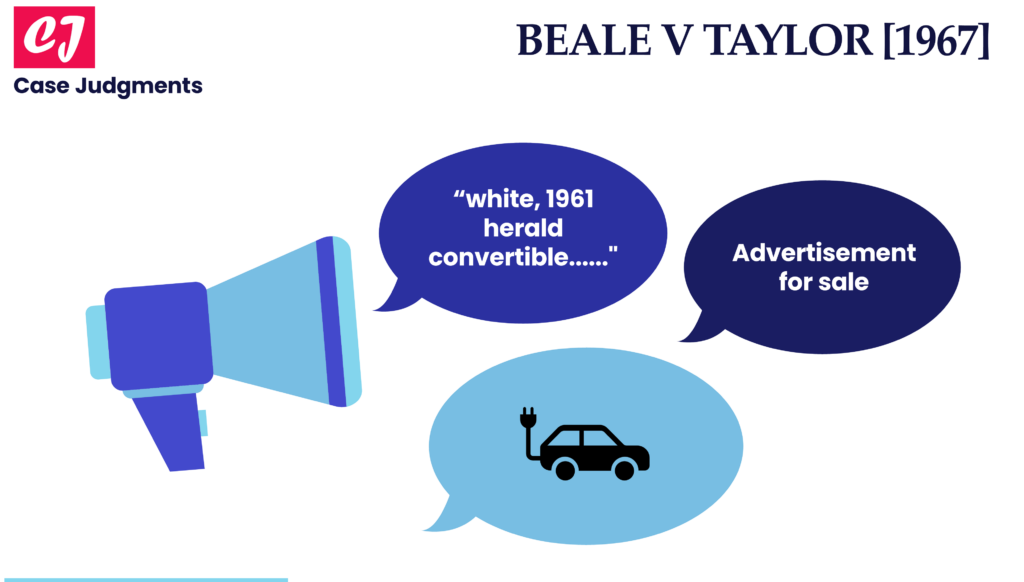
A Case Summary of Varley v Whipp [1900]
Case name & citation: Varley v Whipp [1900] 1 QB 513
Year of the case: 1900
Jurisdiction: England and Wales
Area of law: Sale by Description, Sale of Goods Act
What is the case about?
This is a famous case concerning the sale of goods by description. It speaks about how a contract of sale gets breached if the goods supplied do not correspond with the description.
Facts of the case (Varley v Whipp)
In the case of Varley v Whipp, there existed a contract for the sale of a second-hand reaping machine that the buyer had not seen. According to the seller (Varley), it had only been used to cut 50 to 60 acres of crop and was brand-new a year before. The buyer (Whipp) had not seen the machine. Upon it being delivered, the buyer discovered that the machine wasn’t what the seller had described. It was found to be an old machine.
He declined to pay the price and returned the machine. To recover the cost, the seller filed a lawsuit.
Issues raised in the case
Had the seller delivered what he promised?
Was he entitled to be paid the agreed-upon price?
The decision of the Court in Varley v Whipp
The Court ruled that a sale by description had taken place. The machine didn’t match the description at all. So, it was decided that the buyer had the right to reject the machine.
The essence of the case
When there is a contract for the sale of goods by description, there is an implied condition that the goods supplied will correspond with the description. As a result, the seller is responsible for ensuring that the goods exactly match the description. To put it in another way, the goods are recognized or identified as the seller had described them to be. If the goods do not match the description, there is a breach of the implied condition, and the buyer has the right to reject the goods.
For instance, if someone orders a “Philips Juicer made in Japan,” and instead receives a “Philips Juicer made in Hong Kong”, it will not be considered satisfactory compliance.
The description may include information on the type or class of the goods, such as First Quality Wheat, B-30 Sugar, or Long Staple Cotton, as well as information about the weight or measurements of the goods, the state in which the goods were sold, the type of packing, etc. It is not just sufficient that some description of the goods has been provided. Rather it is necessary that the description of the goods was of the essence of the contract in the sense that the buyer must have relied on it to determine the identity of the goods to be supplied by the seller.
Further, in the given case of Varley v Whipp, it was held that in all cases where a buyer has not seen the goods but relies on the description alone, it is a sale by description. And thus, the implied condition applies.
What if the buyer has seen the goods?
Sometimes it may so happen that even if the buyer has seen the goods, it may still be considered a sale by description if he buys them based on what was said to him rather than what he has seen.
To take an example, you may refer to Nicholson & Venn v Smith Marriott [(1947) 177 LT 189]. Here, a set of linen napkins and tablecloths were listed as “dating from the seventeenth century” in an auction sale. When the buyer, an antiquities dealer, saw it, he decided to buy it. However, he later discovered that it was actually an “eighteenth-century set”. It was held that because the buyer had relied on the description, he had the right to return the goods because they did not match the description.
List of references:
- Conditions & warranties. (n.d.). http://law.uok.edu.in/Files/5ce6c765-c013-446c-b6ac-b9de496f8751/Custom/Conditions_and_Warranties.pdf
- STATUTORY REGULATION OF CONTRACTS FOR THE SALE AND SUPPLY OF GOODS. (n.d.). THE LAW OF INTERNATIONAL TRADE AND CARRIAGE. http://www.nadr.co.uk/articles/published/shipping/003CHAPTERTHREETRADE1.pdf
- Conditions and Warranties. (n.d.). Egyankosh. https://egyankosh.ac.in/bitstream/123456789/13421/1/Unit-17.pdf
You might also like:
More from sale of goods:

